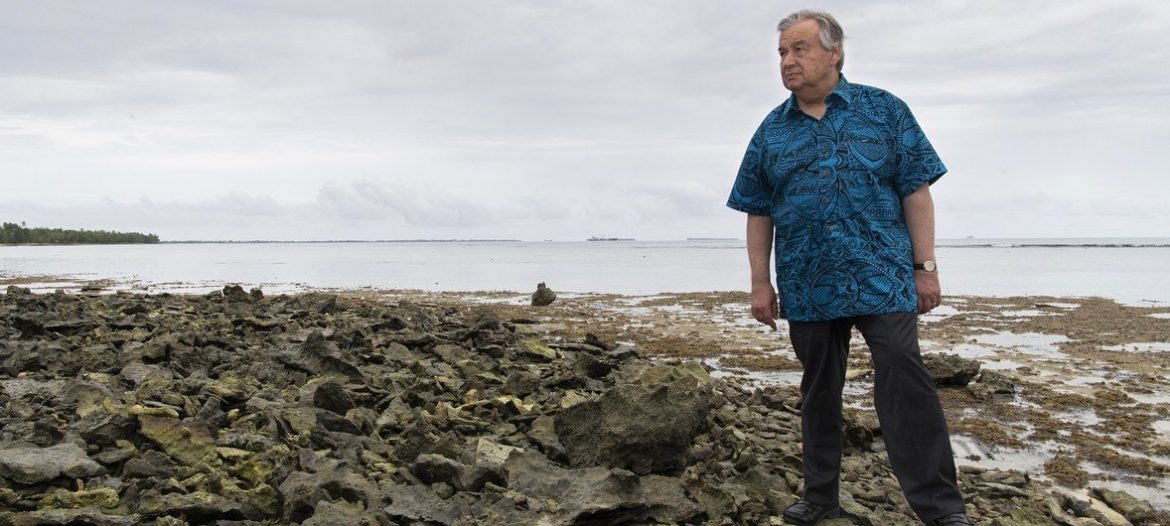António Guterres, the UN secretary general has warned during a visit to Tonga that the Pacific island nations are in “grave danger” from rising sea levels and the world must “answer the SOS before it is too late”.
During the visit, the UN chief urged the world to “look to the Pacific and listen to the science” as he released two new reports on the sidelines of the Pacific Islands Forum, the region’s most important annual political gathering.
According to a regional report compiled by the World Meteorological Organization (WMO) and released on Tuesday, Sea-surface temperatures in the south-west Pacific have risen three times faster than the global average since 1980.
Among other things, the report also found that marine heatwaves in the region had roughly doubled in frequency since 1980 and become more intense and longer-lasting. The report said that 34 mostly storm or flood-related “hydrometeorological hazard events” in the south-west Pacific last year led to more than 200 deaths and affected more than 25 million people.
In a second report published on Tuesday, the UN’s climate action team warned that the climate crisis and sea-level rise were “no longer distant threats”, especially for the Pacific’s small island developing states.
The Intergovernmental Panel on Climate Change (IPCC) concluded with high confidence in 2021 that the global mean sea level was rising at rates unprecedented in at least the last 3,000 years as a result of human-induced global warming.
Read also: Campaigners drag EU to court over ‘grossly inadequate’ 2030 climate targets
However, the new UN report, titled Surging Seas in a Warming World, said: “Since then, emerging research on climate ‘tipping points’ and ice sheet dynamics is raising alarm among scientists that future sea-level rise could be much larger and occur sooner than previously thought.”
Sea-level rise is caused by melting land ice and the expansion of seawater as it warms. Guterres told reporters in Tonga on Tuesday that it had “unparalleled power to cause havoc to coastal cities and ravage coastal economies”. He said Pacific islands were “uniquely exposed” because 90% of people lived within 5km of the coast and about 50% of infrastructure was located within 500 metres of the sea.
If the world heated to 3C above preindustrial levels, which is roughly what is expected under current policies, Pacific islands “can expect at least 15cm of additional sea-level rise by mid-century, and more than 30 days per year of coastal flooding in some places”, Guterres said.
Story was adapted from the Guardian.
